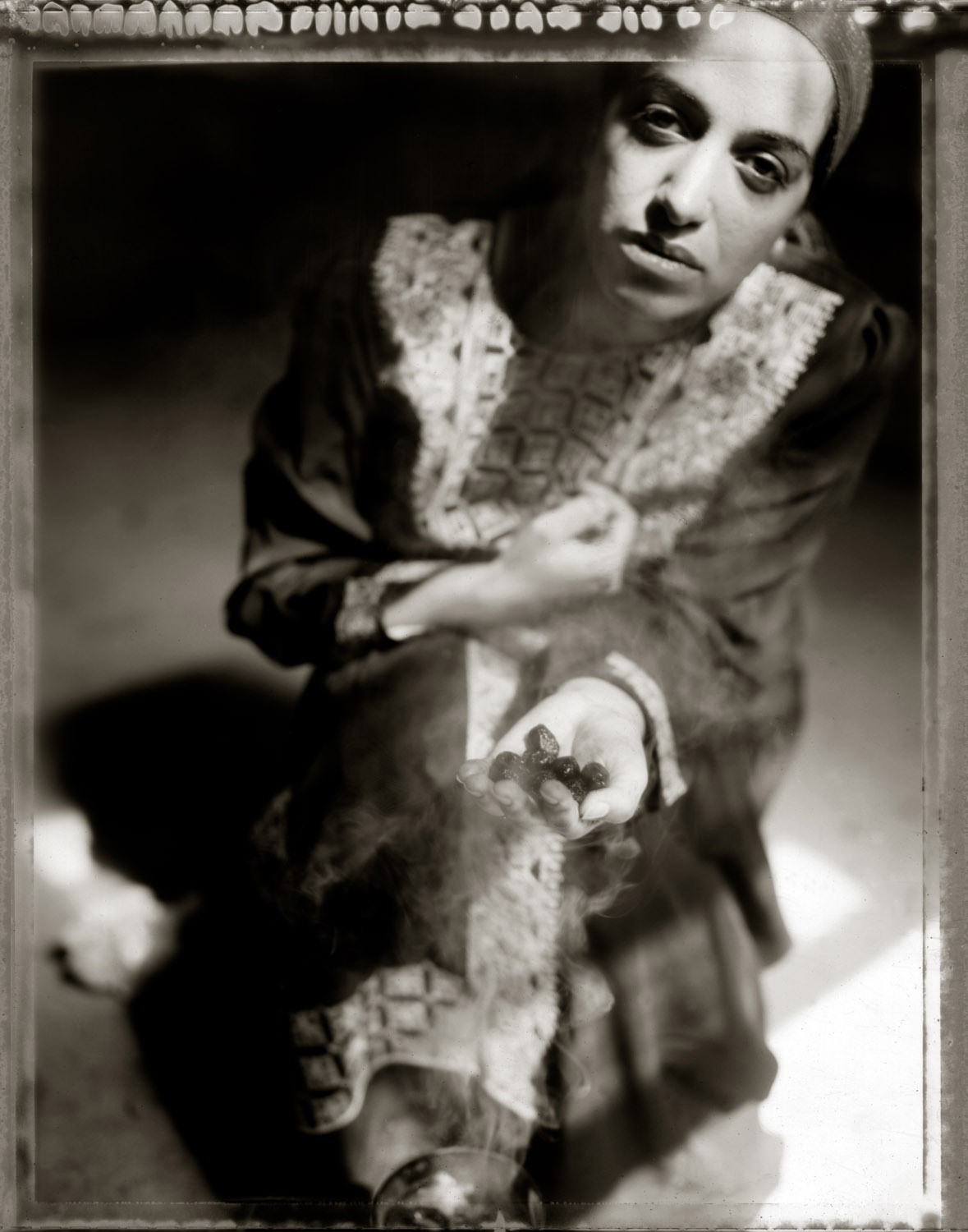
Sama Alshaibi, Olives from Gaza: the bitter dream
Sama Alshaibi
1973-
Iraqi/Palestinian
Date
2004
Medium Specific
Digital print
Classification
Photograph
Dimensions
19 3/4 x 15 in. (50.2 x 38.1 cm)
Framed: 25 x 21 in. (63.5 x 53.3 cm)
Framed: 25 x 21 in. (63.5 x 53.3 cm)
Accession Number
2020.20.10.15
Credit
Gift of the Artist
Memo / Artist Statement
Birthright: Representing the Palestinian Diaspora
By Sama Alshaibi
What is most denied to Palestinians by the international media is the ability to communicate their own story to a world that noted scholar Edward Said described as “hypnotized by a mythological Zionist narrative of an empty Palestine.” In effect, Palestinians have been denied the “permission to narrate” their own story. We have been historically powerless to combat propaganda that asserts that Palestine was an empty land waiting for the return of Jews persecuted in Europe for centuries. The creation of the state of Israel in 1948 resulted in the expulsion 800,000 out of the 900,000 Palestinians rooted in the region for nearly 1000 years. Subsequent wars/Intifada and occupation have led to 4 million Palestinian and decedents now living in the Diaspora. Millions more have been internally displaced within their own country. The media’s largest triumph, however, is the reduction of the Palestinian persona into a single crude terrorist “body.”
My work is based on narratives of my family’s forced migration from Palestine, to Iraq, and then to America, and culminates with my own return to Palestine, the land we as Arabs are forbidden to enter. The work forms a discourse that complicates accepted and official history. As witnesses to history, my family’s memories act as personal testimony that objects to the effacement of events that have shaped geography and modern-day politics.
By utilizing the graffiti writing style over the pregnant belly (a symbol of our future), the work alludes to the architectural walls inside the West Bank where a dialogue of written protest takes place. These writings act as discussions, declarations and documentation of life under occupation. The writing on the surface of my skin connects my body in the US to the surfaces of our land, Palestine. Excerpts of poems from noted Palestinian poets, captures our voice of determination and longing. My work, based on my family’s exile, uses the body as a symbol, the retrospective witness that links our present to a time before we were refugees, exiles and “terrorists”. As such, it defies attempts to obliterate our history and who we collectively are.
April, 2006
By Sama Alshaibi
What is most denied to Palestinians by the international media is the ability to communicate their own story to a world that noted scholar Edward Said described as “hypnotized by a mythological Zionist narrative of an empty Palestine.” In effect, Palestinians have been denied the “permission to narrate” their own story. We have been historically powerless to combat propaganda that asserts that Palestine was an empty land waiting for the return of Jews persecuted in Europe for centuries. The creation of the state of Israel in 1948 resulted in the expulsion 800,000 out of the 900,000 Palestinians rooted in the region for nearly 1000 years. Subsequent wars/Intifada and occupation have led to 4 million Palestinian and decedents now living in the Diaspora. Millions more have been internally displaced within their own country. The media’s largest triumph, however, is the reduction of the Palestinian persona into a single crude terrorist “body.”
My work is based on narratives of my family’s forced migration from Palestine, to Iraq, and then to America, and culminates with my own return to Palestine, the land we as Arabs are forbidden to enter. The work forms a discourse that complicates accepted and official history. As witnesses to history, my family’s memories act as personal testimony that objects to the effacement of events that have shaped geography and modern-day politics.
By utilizing the graffiti writing style over the pregnant belly (a symbol of our future), the work alludes to the architectural walls inside the West Bank where a dialogue of written protest takes place. These writings act as discussions, declarations and documentation of life under occupation. The writing on the surface of my skin connects my body in the US to the surfaces of our land, Palestine. Excerpts of poems from noted Palestinian poets, captures our voice of determination and longing. My work, based on my family’s exile, uses the body as a symbol, the retrospective witness that links our present to a time before we were refugees, exiles and “terrorists”. As such, it defies attempts to obliterate our history and who we collectively are.
April, 2006
